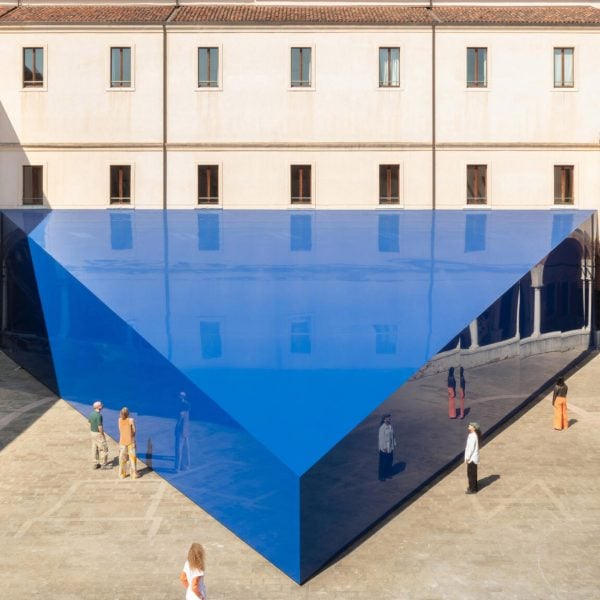Italian architecture studio Una/Unless has created a wedge-shaped temporary pavilion for the courtyard of the Accademia di Belle Arti di Venezia, featuring a shimmering blue skin intended to evoke the ocean.
The pavilion was designed by architect Giulia Foscari’s studio Una/Unless for the art school’s first-ever inclusion in the Venice Art Biennale circuit and houses an exhibition by multidisciplinary artist Josèfa Ntjam.
The geometric structure was informed by the symmetry found within the facades of the Renaissance building, which was built as a hospital known as the Ospedale degli Incurabili and converted to its current purpose in 1999.
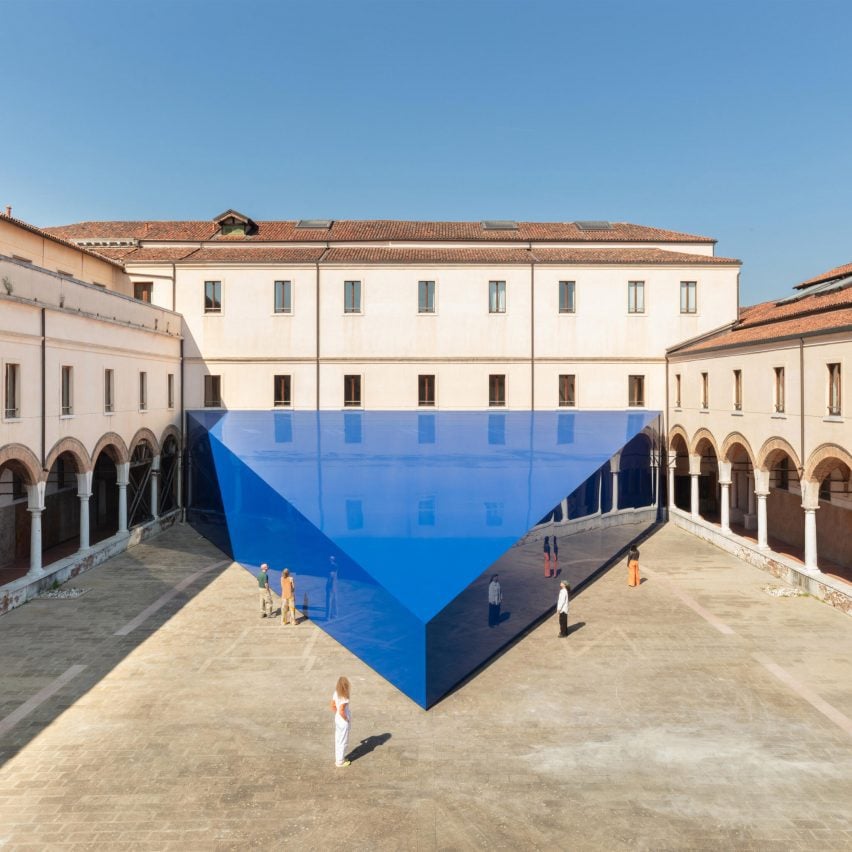
Una/Unless also took inspiration from the themes of the Swell of Spæc(i)es exhibition, which was commissioned by the LAS Art Foundation and presents an otherworldly environment informed by the convergence of the deep ocean and outer space.
The architects proposed a triangular blue prism that they claimed “appears to have fallen from outer space, or else from the celestial virtual realm projected by Josèfa Ntjam.”
“While its abstract presence might seem at first alien,” they added, “its inherent symmetry and its reflective surface, which allows for an optical illusion that reconstructs the fourth side of the loggia, establish a subtle dialogue with the historic context.”
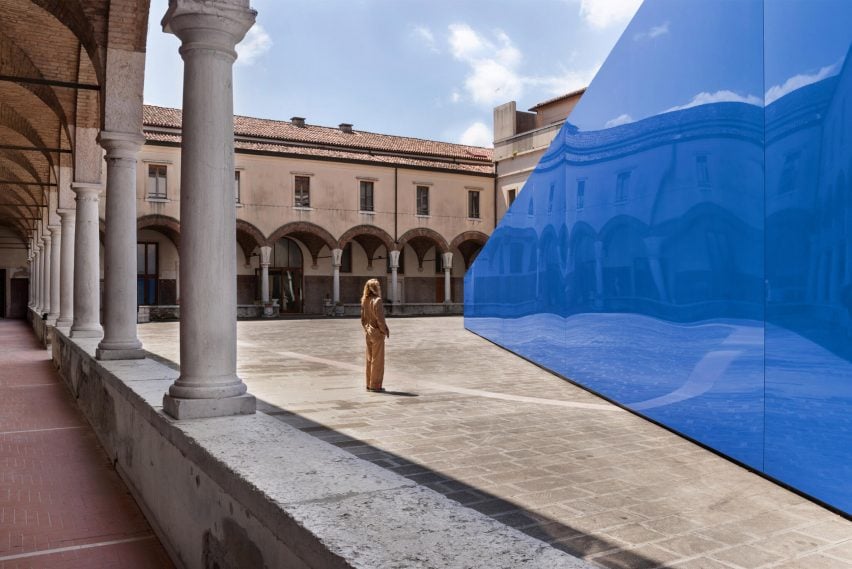
The pavilion features on the shortlist for Dezeen Awards 2024 in the installation design category, alongside projects including an intervention that used a series of fabric forms to transform an unfinished shopping centre in the UAE.
The structure, which covers an area of approximately 350 square metres, extends out into the courtyard but cannot be accessed from this space, thus encouraging visitors to interact with the school’s programme before entering through the fourth loggia.
The triangular form points towards the water of the Venice Lagoon and the sea beyond, emphasising the exhibition’s focus on the importance of oceans in our planetary ecosystem.
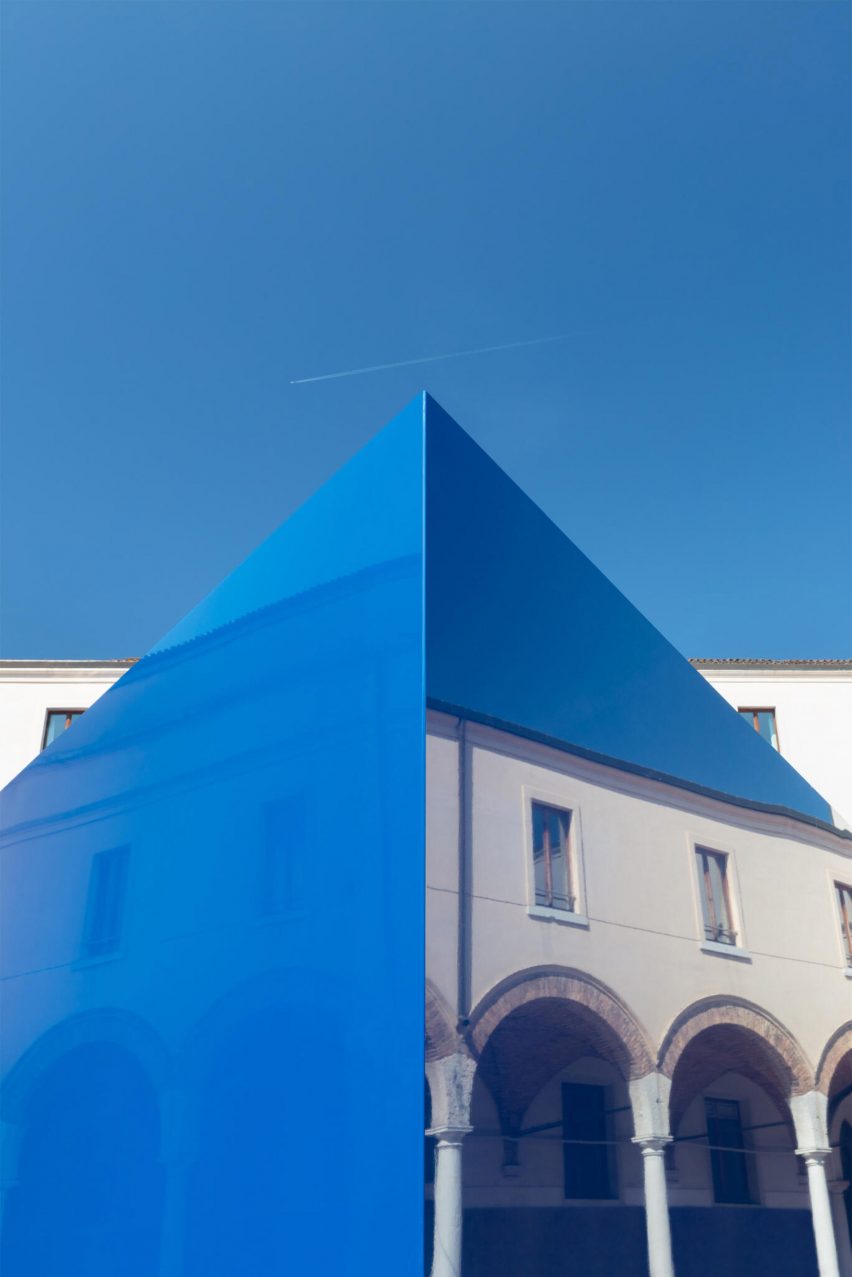
The pavilion is clad with a high-tech seamless membrane from ceiling brand Barrisol that hasn’t previously been used externally or as a cladding material. The lightweight skin moves gently in the wind, creating a dynamic effect that evokes rippling water.
The glossy blue surface reflects the surrounding colonnades, creating a striking juxtaposition of the traditional and the modern. As dusk descends, the pavilion appears to dematerialise as its colour becomes desaturated and the reflections of the illuminated courtyard take over.
Inside the pavilion, a convex curtain traces the footprint of a chapel built in 1523 by Jacopo Sansovino and demolished in 1831 when the hospital was repurposed to house a civic hospital and military barracks.
The curtain provides the backdrop for an LED screen that follows its curved form and is used to display Ntjam’s compilation of AI-generated animations depicting an otherworldly environment.
The visualisation is accompanied by a soundscape composed by musician Fatima al Qadiri, with fragments of narration coming from suspended sonic sculptures that resemble jellyfish.
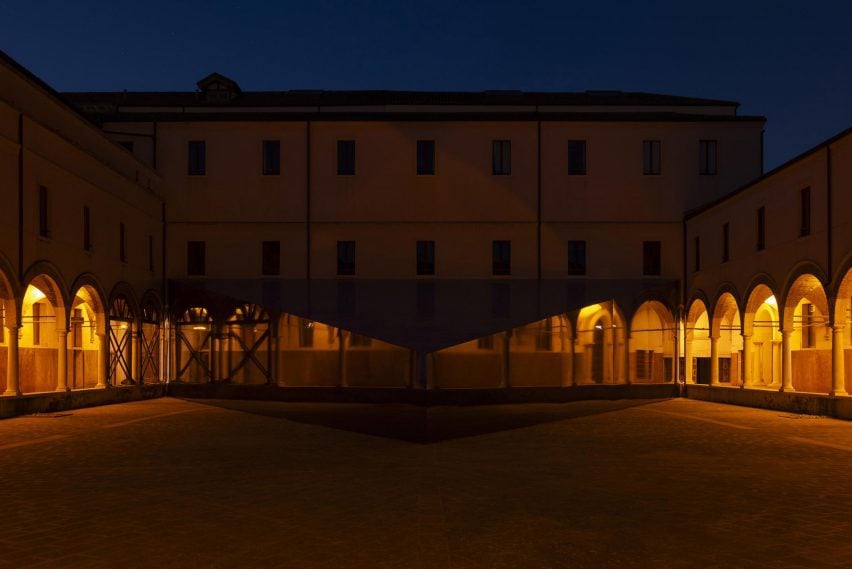
Una/Unless also designed a satellite space at the Istituto di Scienze Marine, which houses a separate exhibition where visitors are invited to create AI-generated hybrid species from Ntjam’s datasets.
The installation was fabricated entirely from the metal profiles used to support plasterboard in construction projects and assembled in a way that will allow it to be dismantled and reused after the event.
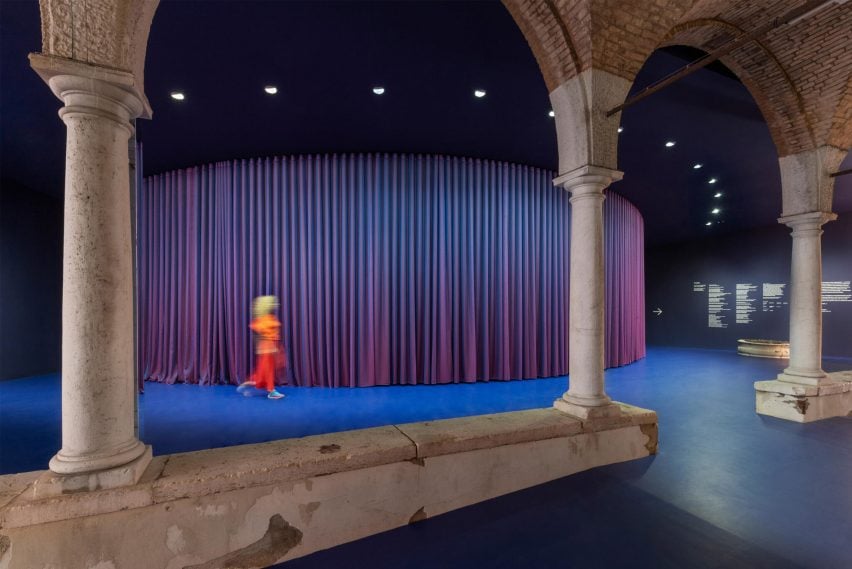
The pavilion was constructed using locally sourced wood and can also be disassembled and recycled when the exhibition closes. Interior fixtures will be donated, while the cladding framework will be returned to the provider for recycling and reuse.
The pavilion will remain in place throughout the duration of the Venice Art Biennale, which concludes on 24 November 2024.
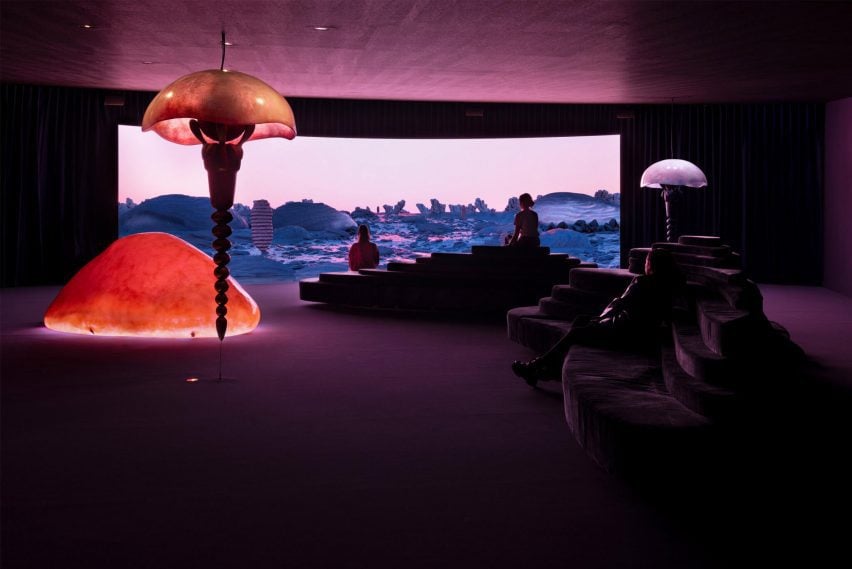
Una is headed by architect Giulia Foscari and is based in Venice. It works internationally on projects of varying scales and is known for its radical approach to the transformation of historical sites.
Unless is the studio’s non-profit arm, which is devoted to interdisciplinary research on extreme environments. Its partners include the Antarctic and Southern Ocean Climate Coalition, as well as Greenpeace and All 4 Climate.
The photography is by Andrea Rossetti and Héctor Chico unless otherwise stated.

